Dirección de esta página: //medlineplus.gov/spanish/ency/article/007561.htm
Para usar las funciones de compartir de esta páginas, por favor, habilite JavaScript.
Es un examen que mide el engrosamiento del pliegue de la nuca. Esta es un área de tejido en la parte posterior del cuello de un feto. Medir este engrosamiento ayuda a evaluar el riesgo para síndrome de Down y otros problemas genéticos en el bebé.
Para medir el pliegue de la nuca el proveedor de atención médica realiza el ultrasonido abdominal (no vaginal). Todos los fetos tienen algo de líquido en la parte posterior de su cuello. En un bebé con síndrome de Down u otros trastornos genéticos, hay más líquido de lo normal. Esto hace que el espacio luzca más grueso.
También se hace un examen de sangre de la madre. En conjunto, estos dos exámenes indicarán si el bebé podría tener síndrome de Down u otro trastorno genético.
El hecho de tener la vejiga llena brindará la mejor imagen de ultrasonido. A usted se le puede pedir que beba 2 o 3 vasos de líquido una hora antes del examen. NO orine antes del ultrasonido.
Es posible que se presente algo de molestia por la presión sobre la vejiga durante el ultrasonido. El gel empleado durante el examen puede sentirse un poco frío y húmedo. Usted no sentirá las ondas de ultrasonido.
Su proveedor le puede recomendar este examen para detectar si su bebé tiene el síndrome de Down. Muchas mujeres embarazadas deciden hacerse este examen.
La translucencia nucal se realiza generalmente entre las semanas 11 y 14 del embarazo. Puede realizarse en el embarazo más temprano que la amniocentesis. Amniocentesis es otro examen con el que se buscan anomalías congénitas.
Una cantidad normal de líquido en la nuca durante el ultrasonido significa que es muy improbable que su bebé tenga síndrome de Down u otro trastorno genético.
La medida de la translucencia nucal incrementa con la edad gestacional.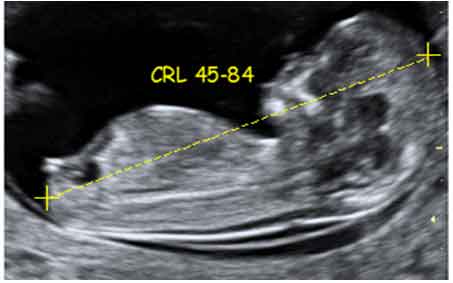 Este es el período entre la concepción y el nacimiento. Cuanto mayor sea la medida en comparación con bebés de la misma edad gestacional, más alto será el riesgo de tener trastornos genéticos.
Este es el período entre la concepción y el nacimiento. Cuanto mayor sea la medida en comparación con bebés de la misma edad gestacional, más alto será el riesgo de tener trastornos genéticos.
Se considera que las siguientes medidas representan un bajo riesgo de tener trastornos genéticos:
Más líquido de lo normal en la nuca significa que hay un mayor riesgo para el síndrome de Down, trisomía 18, trisomía 13, síndrome de Turner o enfermedad cardíaca congénita. Pero esto no indica con seguridad que el bebé padezca síndrome de Down u otro trastorno genético.
Si el resultado es anormal, se pueden realizar otros exámenes. La mayoría de las veces, el otro examen que se hace es la amniocentesis.
No hay riesgos conocidos a raíz del ultrasonido.
Examen de la translucencia nucal; TN; Examen del pliegue de la nuca; Escaneo del pliegue de la nuca; Examen genético prenatal; Síndrome de Down – translucencia nucal
Driscoll DA, Simpson JL.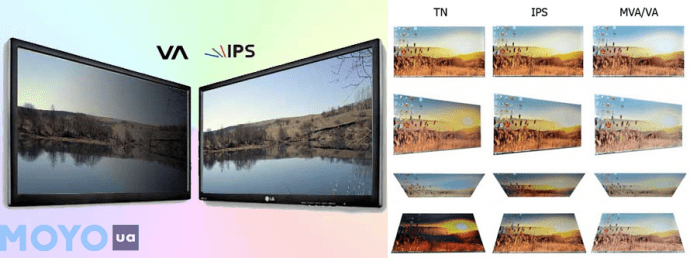 Genetic screening and diagnosis. In: Landon MB, Galan HL, Jauniaux ERM, et al, eds. Gabbe’s Obstetrics: Normal and Problem Pregnancies. 8th ed. Philadelphia, PA: Elsevier; 2021:chap 10.
Genetic screening and diagnosis. In: Landon MB, Galan HL, Jauniaux ERM, et al, eds. Gabbe’s Obstetrics: Normal and Problem Pregnancies. 8th ed. Philadelphia, PA: Elsevier; 2021:chap 10.
Walsh JM, D’Alton ME. Nuchal translucency. In: Copel JA, D’Alton ME, Feltovich H, et al, eds. Obstetric Imaging: Fetal Diagnosis and Care. 2nd ed. Philadelphia, PA: Elsevier; 2018:chap 45.
Wapner RJ, Dugoff L. Prenatal diagnosis of congenital disorders. In: Resnik R, Lockwood CJ, Moore TR, Greene MF, Copel JA, Silver RM, eds. Creasy and Resnik’s Maternal-Fetal Medicine: Principles and Practice. 8th ed. Philadelphia, PA: Elsevier; 2019:chap 32.
Versión en inglés revisada por: John D. Jacobson, MD, Department of Obstetrics and Gynecology, Loma Linda University School of Medicine, Loma Linda, CA. Also reviewed by David C. Dugdale, MD, Medical Director, Brenda Conaway, Editorial Director, and the A.D.A.M. Editorial team.
Traducción y localización realizada por: DrTango, Inc.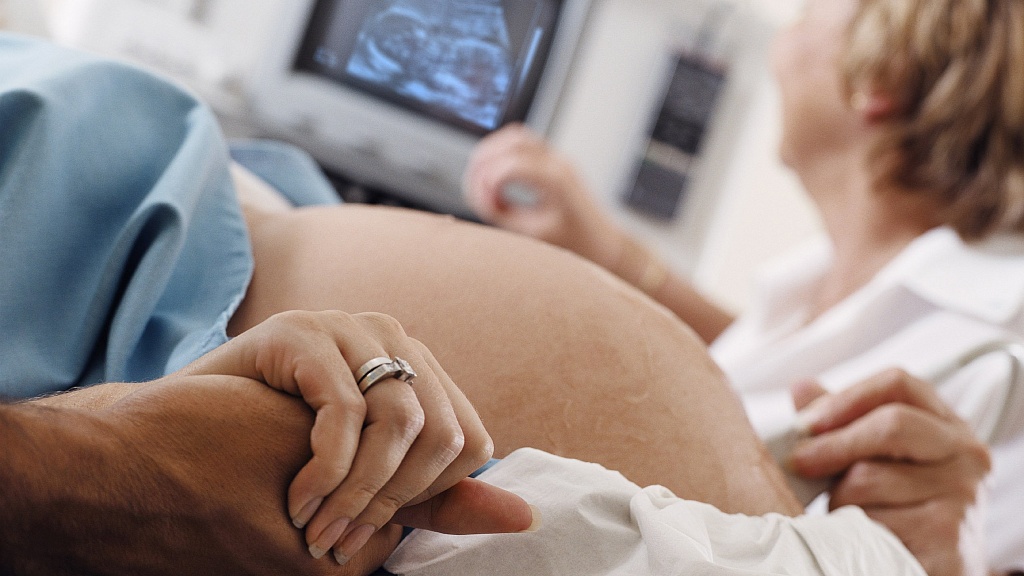
Una ecografía es una técnica de diagnóstico por imágenes que utiliza el ultrasonido. Es sumamente seguro durante el embarazo, tanto para la mamá como para el bebé, ya que no utiliza radiación -y por supuesto- no invasivo.
Durante la gestación, es una herramienta irremplazable. Gracias a que permite ver al bebé “en vivo y en directo” dentro del vientre, brinda información sobre su crecimiento y muchísimos otros aspectos de la salud (cantidad de líquido amniótico, ubicación de la placenta, entre otros).
A lo largo del embarazo es recomendable realizar varias ecografías de rutina. No hay criterio del todo unificado en cuanto a la cantidad, ya que depende del obstetra que sigue el embarazo y de cada paciente. Sin embargo, lo ideal es realizar una primera ecografía alrededor de la semana 7, otra entre las semanas 11 y 14, una a mediados del embarazo, y otra aproximadamente en la semana 30.
Y si bien se trata del mismo estudio -como ya veremos- en cada uno de los trimestres tiene un objetivo diferente.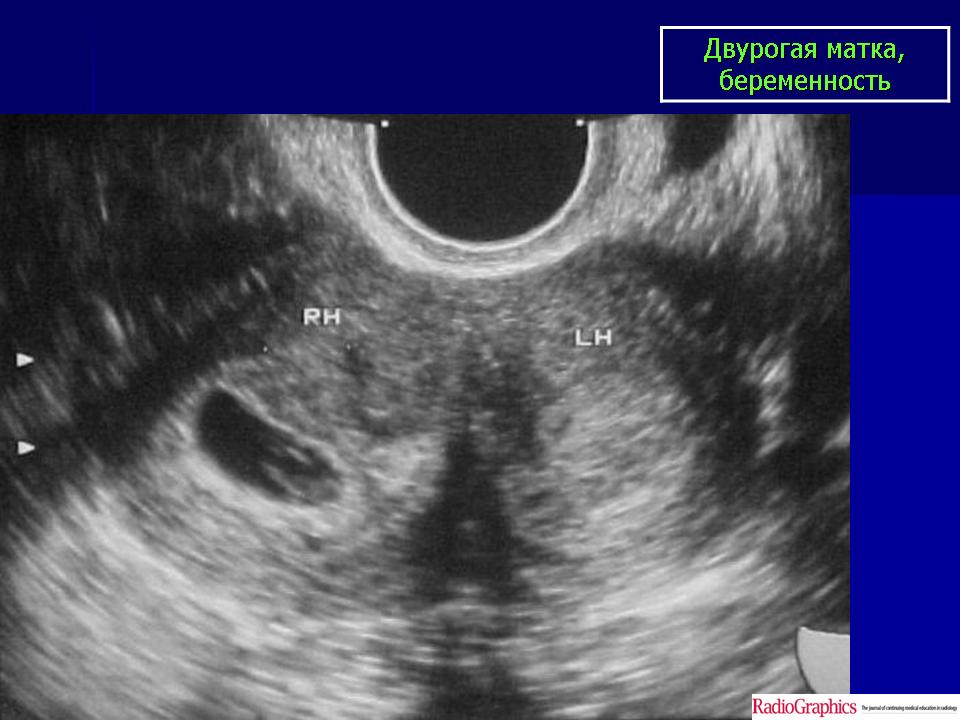
La ecografía en el primer trimestre
Lo ideal es realizar una primera ecografía en forma precoz, alrededor de la semana 7 de gestación (contada desde la fecha de la última menstruación). Este estudio es sumamente importante ya que brinda información valiosísima. Su finalidad: confirmar el embarazo, que el embrión tiene latidos, que está dentro del útero, la cantidad de embriones (es decir si hay un bebé o más). En esta ecografía también se realizan mediciones al embrión, lo que permite determinar con exactitud la edad gestacional; de esta forma el obstetra puede estimar en forma más certera la fecha probable de parto (es un dato mucho más confiable que la fecha de la última menstruación, ya que no todas las mujeres son regulares). Vale destacar que en las mediciones que se efectúen en las ecografías siguientes -dado que en posteriormente cada bebé crecerá a su propio ritmo- no debería corregirse la fecha probable de parto.
Si bien la primera ecografía puede realizarse por vía abdominal o transvaginal, es preferible la última, ya que permite una mejor visualización.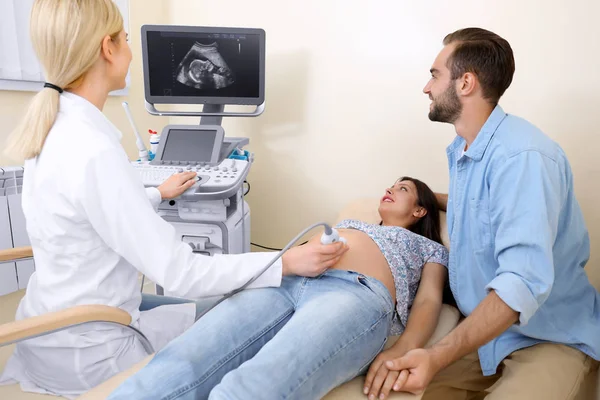 Para tu tranquilidad, no implica peligro alguno para el bebé, ya que el transductor ingresa en la vagina, pero no en el útero. Por otra parte, se realiza colocando un preservativo estéril sobre el mismo, por lo que no hay riesgo de contagio de infecciones.
Para tu tranquilidad, no implica peligro alguno para el bebé, ya que el transductor ingresa en la vagina, pero no en el útero. Por otra parte, se realiza colocando un preservativo estéril sobre el mismo, por lo que no hay riesgo de contagio de infecciones.
La siguiente ecografía importante de este trimestre es la Translucencia Nucal (TN), que se lleva a cabo entre las semanas 11 y 14 del embarazo. En esta oportunidad se mide un pliegue de líquido que hay en la nuca del bebé, además de otros parámetros. Si la medición de la TN da aumentada, hay más riesgo de que el bebé tenga algún problema cromosómico -entre ellos síndrome de Down-. En ese caso, se le recomienda a la la futura mamá realizar un estudio de ADN. Si el estudio cromosómico es normal, es preciso descartar otras patologías que también pueden provocar un aumento de la TN, como por ejemplo problemas cardíacos.
La translucencia nucal no sólo brinda información sobre el bebé, sino que también logra calcular si la mujer tiene mayor riesgo de desarrollar hipertensión durante el embarazo, o problemas asociados a ésta. De ser así, se indica la administración de aspirina desde el mismo momento en que se tienen los resultados de la TN (no sirve tomarla más adelante). Hay algo que sí vale la pena destacar: la translucencia es un estudio de probabilidad, esto quiere decir que no descarta ni confirma ninguna patología ni diagnóstico.
De ser así, se indica la administración de aspirina desde el mismo momento en que se tienen los resultados de la TN (no sirve tomarla más adelante). Hay algo que sí vale la pena destacar: la translucencia es un estudio de probabilidad, esto quiere decir que no descarta ni confirma ninguna patología ni diagnóstico.
Una ecografía realizada en forma precoz brinda información confiable sobre la edad gestacional, y por ende, sobre la fecha probable de parto.
Segundo trimestre: a mitad de camino
En esta etapa de la gestación -que según los especialistas es “la primavera del embarazo”- también es preciso realizar un estudio ecográfico.
Se lleva a cabo idealmente entre las semanas 20 y 22, a través del abdomen, y recibe el nombre de Scan Fetal. ¿Cuál es su finalidad? Realizar una evaluación detallada de toda su anatomía, de pies a cabeza, deteniéndonos en cada uno de sus órganos (de ahí su nombre). Este estudio permite detectar problemas cardíacos o renales, del sistema nervioso, entre otros.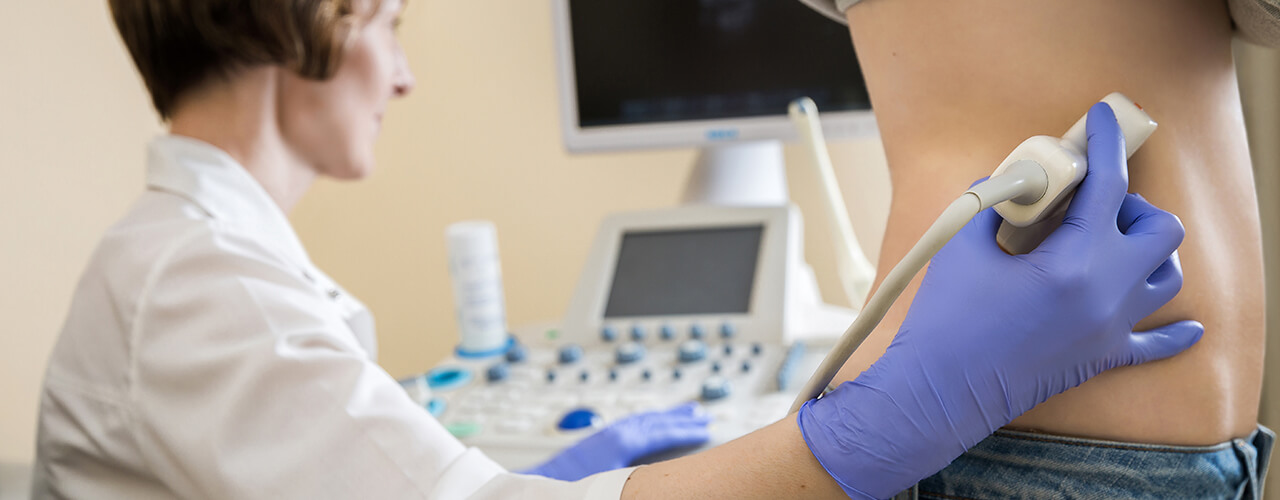
En esta ecografía todos los papás suelen hacer “la pregunta del millón”: si es posible ver el sexo del bebé. Si bien en la TN se puede “sospechar” si se trata de una niña o un varón, desde la semana 16 se suelen divisar claramente los genitales externos. Es importante que los papás lo puedan ver ellos mismos, y que no se queden solamente con las palabras del ecografista.
También se evalúa el líquido amniótico, la placenta, y en algunos casos un doppler para calcular el riesgo de hipertensión gestacional y problemas asociados.
En ocasiones el obstetra indica una ecografía transvaginal con el propósito de medir la longitud y el estado del cuello del útero, y de esta forma predecir el riesgo de un parto prematuro si el mismo está acortado. Se realiza el mismo día, a continuación del scan fetal.
La ecografía en el tercer trimestre
El embarazo está avanzado y el nacimiento del bebé está en cuenta regresiva en la mente de la mamá.
Alrededor de la semana 30 se suele indicar una ecografía obstétrica. En esta oportunidad se evalúa su crecimiento, en qué posición está el bebé (es decir si ya rotó y está con la cabeza hacia abajo, si está “sentado”, o si está en posición transversal), se calcula su peso, y se evalúa el líquido amniótico y la ubicación de la placenta.
En esta oportunidad se evalúa su crecimiento, en qué posición está el bebé (es decir si ya rotó y está con la cabeza hacia abajo, si está “sentado”, o si está en posición transversal), se calcula su peso, y se evalúa el líquido amniótico y la ubicación de la placenta.
En ocasiones, esta ecografía también se realiza con doppler fetal para evlar cómo le llega la sangre al bebé desde la placenta.
Tatyana Nilovna Yablonskaya is a well-known Soviet and Ukrainian artist who has received many different awards for her long creative life. Her work is distinguished by a special style, born under the influence of one of the trends in post-impressionism – synthetism. In addition, the influence of folk art is clearly visible in the work of Yablonskaya. Thanks to such a diverse influence, her paintings were distinguished by their extraordinary brilliance and expressiveness, combined with realism of the image and sharp social themes.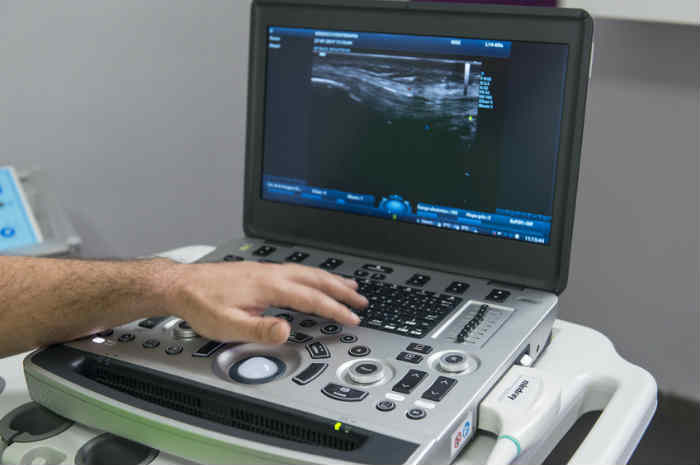 nine0003
nine0003
The future artist was born in 1917 in Smolensk. In many ways, her creative life was predetermined by her family, since her father was a famous artist, graphic artist and teacher of literature. The intelligent environment and the troubled time associated with numerous changes in the life of the country left their mark on both personal life and the work of Yablonskaya. Her paternal grandfather was a priest, and this was a direct threat not only to the girl’s father, but to her entire family. As a result, the father of the future artist tried for many years to emigrate from the Soviet Union and take his family abroad. nine0003
When the girl was 11 years old, her family moved to Odessa, and after that – to Kamenetz-Podolsky. Both moves were associated with attempts to secretly get out of the country, as well as with the illness of children – Tanya and her brother and sister fell ill with pneumonia and had difficulty recovering. In this ancient city, Tatyana graduated from a seven-year school, and then in 1934 she moved to Lugansk.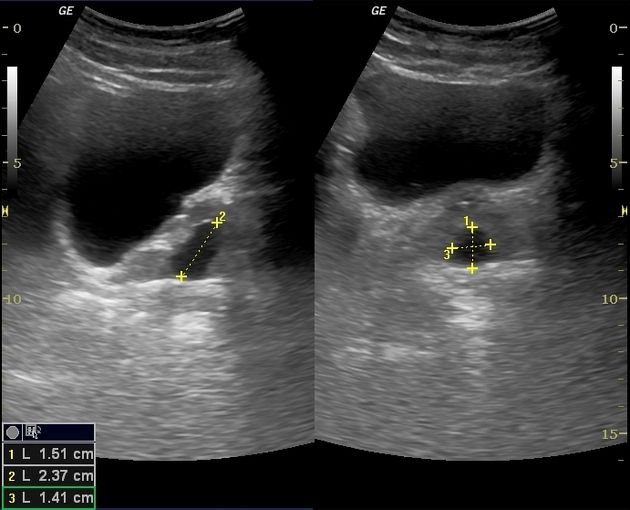 This was the end of my father’s attempts to get rid of the Soviet regime.
This was the end of my father’s attempts to get rid of the Soviet regime.
She began her art education a year later at the Kiev Art College. When it was closed a year later, the girl entered the painting department of the Kyiv State Art Institute (now the National Academy of Fine Arts and Architecture). She graduated at 1941 years old. At this time, she married an artist, seven years older, but family life was interrupted as soon as the war began.
Tatyana’s husband was taken to the front, and she herself, expecting her first child, ended up in an evacuation near Saratov. On the collective farm, she worked on a par with local women, and in her rare free moments she painted portraits of fathers, husbands, sons and brothers who did not return from the war – for the commemoration. Her husband returned from the war alive, but life did not work out. Tatyana gave birth to another daughter, but the union broke up. At that time she was already a famous artist, and her husband did not smile at the glory. Jealousy for success killed love. nine0003
Jealousy for success killed love. nine0003
Yablonskaya had not only a successful creative life, but also an active career. During her life she held many high positions and more than 30 solo exhibitions on the territory of the Soviet Union and beyond. However, her political position as an art official and as a deputy did not affect her active life position. She was a very brave woman who defended the artist’s right to self-expression. This attitude was seen as opposed to the “will of the party” and led to numerous clashes with bureaucrats and party bosses. Yablonskaya was deprived of exhibitions, her paintings were removed from the exposition, and removed from their posts. But even punitive measures could not change her attitude to art. She received the Stalin Prize and an excellent scolding for “anti-Sovietism.” nine0003
The artist lived a long life, passing away at the age of 88. She wrote the last picture a day before her death, being in a wheelchair for six years after a stroke, semi-paralyzed. Her canvases are in many museums of the countries of the former USSR, and the family continued the traditions of the talented master.
Her canvases are in many museums of the countries of the former USSR, and the family continued the traditions of the talented master.
https://ria.ru/20210503/tolstaya-1730480437.html
Biography of Tatiana Tolstaya
Biography of Tatiana Tolstaya – RIA Novosti0003
Biography of Tatyana Tolstaya
Russian writer, publicist, TV presenter Tatyana Nikitichna Tolstaya was born on May 3, 1951 in Leningrad (now St.
2021-05-03T03: 49
2021-05-03T03: 49
Certificates
Artemy Lebedev
Tatyana Tolstaya
Alekvei Lebedev
/HTML/Head/META [@name = ‘Og: OG: Title’ ]/@content
/html/head/meta[@name=’og:description’]/@content 955). There were seven children in the family. In 1974, Tatyana Tolstaya graduated from the department of classical philology (with the study of Latin and Greek) of the Leningrad State University named after A.A. Zhdanov (now St. Petersburg State University). In the same year, in connection with her marriage, she moved to Moscow. For nine years, Tatyana Tolstaya worked in the main editorial office of oriental literature at the Nauka publishing house. In 1983, she published her first story, “They Sat on the Golden Porch,” in the Aurora magazine, and made her debut as a critic in the Voprosy Literature magazine with a review of Viktor Petelin’s monograph dedicated to the work of Alexei Tolstoy. Later it was published in “New World” and other major magazines. In subsequent years, she wrote the stories “Date with a Bird” (1983), “Sonya” (1984), “Clean Sheet” (1984), “Okkervil River” (1985), “Mammoth Hunting” (1985), “Peters” (1986), “Sleep well, son” (1986 ), “Fire and Dust” (1986), “The Most Beloved” (1986), “Poet and Muse” (1986), “Seraphim” (1986), “The month came out of the fog” (1987), “Love – do not love “(1984), “Night” (1987), “Flame of Heaven” (1987), “Sleepwalker in the Fog” (1988), “Limpopo” (1990), “Story” (1991), “Yorik” (2000), “Window” (2003), “Light Worlds” (2013), “Smoke and Shadow” (2014), “Teachers” (2014), “Girl in Bloom” (2015), “Sebastian” (2019).
Petersburg State University). In the same year, in connection with her marriage, she moved to Moscow. For nine years, Tatyana Tolstaya worked in the main editorial office of oriental literature at the Nauka publishing house. In 1983, she published her first story, “They Sat on the Golden Porch,” in the Aurora magazine, and made her debut as a critic in the Voprosy Literature magazine with a review of Viktor Petelin’s monograph dedicated to the work of Alexei Tolstoy. Later it was published in “New World” and other major magazines. In subsequent years, she wrote the stories “Date with a Bird” (1983), “Sonya” (1984), “Clean Sheet” (1984), “Okkervil River” (1985), “Mammoth Hunting” (1985), “Peters” (1986), “Sleep well, son” (1986 ), “Fire and Dust” (1986), “The Most Beloved” (1986), “Poet and Muse” (1986), “Seraphim” (1986), “The month came out of the fog” (1987), “Love – do not love “(1984), “Night” (1987), “Flame of Heaven” (1987), “Sleepwalker in the Fog” (1988), “Limpopo” (1990), “Story” (1991), “Yorik” (2000), “Window” (2003), “Light Worlds” (2013), “Smoke and Shadow” (2014), “Teachers” (2014), “Girl in Bloom” (2015), “Sebastian” (2019). In 1987, a collection of her stories “They sat on the golden porch …” was published in Moscow, which included thirteen stories by Tolstoy, including: “Dear Shura” (1985), “Fakir” (1986), “Circle” ( 1987) and others. After the publication of the collection, Tatyana Tolstaya was accepted into the Writers’ Union of the USSR. Subsequently, 18 collections of the writer’s works were published, including two – “Sisters” (1998) and “Two” (2001) – were compiled from stories written by her and her sister Natalia. In 2010, in collaboration with Olga Prokhorova, Tatyana Tolstaya published a collection of poems “The Same Alphabet of Pinocchio”. In 2000, Tolstoy’s first novel “Kys” was published, which caused a wide response and became very popular. On its basis, several theatrical performances were staged, and in 2001 a literary series was released on Radio Russia. She is the author of numerous essays and essays. Since 19From 1990 to 1999, Tatyana Tolstaya spent considerable time in the United States, where she taught Russian literature and fiction at Skidmore College (Saratoga Springs, New York) and Princeton University, collaborated with the New York Review of Books, The New Yorker, TLS and other journals, lectured at other universities.
In 1987, a collection of her stories “They sat on the golden porch …” was published in Moscow, which included thirteen stories by Tolstoy, including: “Dear Shura” (1985), “Fakir” (1986), “Circle” ( 1987) and others. After the publication of the collection, Tatyana Tolstaya was accepted into the Writers’ Union of the USSR. Subsequently, 18 collections of the writer’s works were published, including two – “Sisters” (1998) and “Two” (2001) – were compiled from stories written by her and her sister Natalia. In 2010, in collaboration with Olga Prokhorova, Tatyana Tolstaya published a collection of poems “The Same Alphabet of Pinocchio”. In 2000, Tolstoy’s first novel “Kys” was published, which caused a wide response and became very popular. On its basis, several theatrical performances were staged, and in 2001 a literary series was released on Radio Russia. She is the author of numerous essays and essays. Since 19From 1990 to 1999, Tatyana Tolstaya spent considerable time in the United States, where she taught Russian literature and fiction at Skidmore College (Saratoga Springs, New York) and Princeton University, collaborated with the New York Review of Books, The New Yorker, TLS and other journals, lectured at other universities.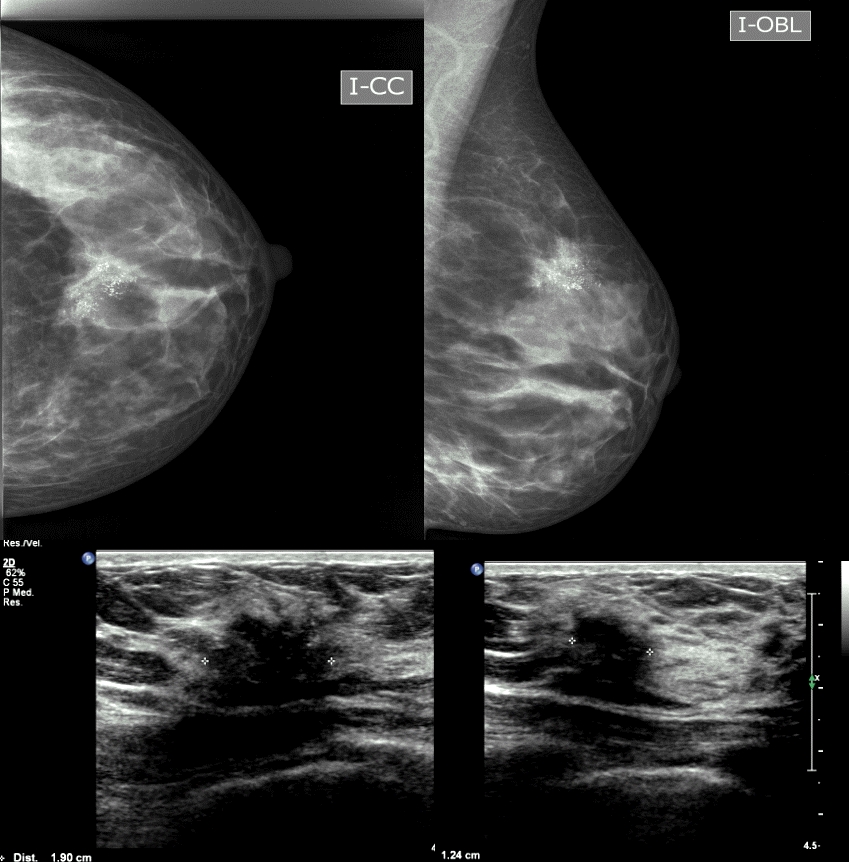 Returning to her homeland in the late 1990s, she took up literary, journalistic and teaching activities. Tatyana Tolstaya was the constant host (together with Avdotya Smirnova) of the television talk show “School of Scandal”, which aired from 2002 to 2014, first on the Kultura TV channel “, and then on NTV. In 2003, the program was awarded the TEFI television award as the best talk show. In collaboration with Smirnova, Tolstaya wrote the book “Kitchen” School of Scandal. “In 2007-2009years, the writer was a permanent member of the jury of the show “Minute of Glory” on Channel One. Tatyana Tolstaya is the winner of the Russian independent award in the field of the highest achievements of literature and art “Triumph” for 2001. In 2010, the writer won the prize in the nomination “New Culture of New Europe “, which she was awarded at the XX International Economic Forum in Poland. In 2014, the story “Easy Worlds” by Tatyana Tolstaya was awarded the Belkin Literary Prize. Laureate of the “Writer of the Year” award for 2019year.
Returning to her homeland in the late 1990s, she took up literary, journalistic and teaching activities. Tatyana Tolstaya was the constant host (together with Avdotya Smirnova) of the television talk show “School of Scandal”, which aired from 2002 to 2014, first on the Kultura TV channel “, and then on NTV. In 2003, the program was awarded the TEFI television award as the best talk show. In collaboration with Smirnova, Tolstaya wrote the book “Kitchen” School of Scandal. “In 2007-2009years, the writer was a permanent member of the jury of the show “Minute of Glory” on Channel One. Tatyana Tolstaya is the winner of the Russian independent award in the field of the highest achievements of literature and art “Triumph” for 2001. In 2010, the writer won the prize in the nomination “New Culture of New Europe “, which she was awarded at the XX International Economic Forum in Poland. In 2014, the story “Easy Worlds” by Tatyana Tolstaya was awarded the Belkin Literary Prize. Laureate of the “Writer of the Year” award for 2019year. Since 1989, he has been a permanent member of the Russian PEN Center. Tatyana Tolstaya has two sons: Artemy Lebedev, designer, artistic director of the Artemy Lebedev Studio, and Alexei Lebedev, photographer, software architect. The material was prepared on the basis of information from RIA Novosti and open sources
Since 1989, he has been a permanent member of the Russian PEN Center. Tatyana Tolstaya has two sons: Artemy Lebedev, designer, artistic director of the Artemy Lebedev Studio, and Alexei Lebedev, photographer, software architect. The material was prepared on the basis of information from RIA Novosti and open sources
96
7 495 645-6601
Rossiya Segodnya
https: //xn—c1acbl2abdlkab1og.xn--p1ai/Awards/
2021
RIA Novosti
1
5
4.7
9000
Internet-graian.ru 9000 49000 49000 49000 645-6601
Rossiya Segodnya
https://xn--c1acbl2abdlkab1og.xn--p1ai/awards/
News
ru-RU
https://ria.ru/docs/about /copyright.html
https://xn--c1acbl2abdlkab1og.xn--p1ai/
RIA Novosti
1
5
4.7
96
7 495 645-6601
Federal State Unitary Enterprise MIA MIA TODELS TODITPS: // XN-C1ACBL2ABDLKAB1GG . xn-p1ai/awards/
xn-p1ai/awards/
1920
1080
True
1920
1440
True
https://cdnn21.img.ria.ru/images/07e5/04/1d/1730481908_ 0:2740:2048_1920x0_80_0_0_bbf11df10ce892c7c5def4b371039ba5.jpg
1920
1920
True
RIA Novosti
1
5
4.7
9000
7 495 645-6601 9000 9000 9000 FSUI MIA “Russia Today”
https: //xn—c1acbl2abdlkab1og.xn--p1ai/Awards/
RIA Novosti
1
5
4.7
96
7 495 64 64 64 64 64 64 64 64 64 64 64 64 64 64 64 64 64 64 64 64 64 64 64 64 64 64 64 646 64 64 646 64 646 64 645 64 646 645 646 64 645 646 64 645 646 64 646 64 645 64 646 64 646 64 646 64 646 64 646 64 646 64 64 64 646 64A
Federal State Unitary Enterprise MIA “Russia Today”
https://xn--c1acbl2abdlkab1og.xn--p1ai/awards/
references, Artemy Lebedev, Tatyana Tolstaya, Alexei Lebedev
References, Artemy Lebedev, Tatiana Tolstaya, Alexei Lebedev
Russian writer, publicist Tatyana Nikitichna Tolstaya was born on May 3, 1951 in Leningrad (now St. Petersburg) in the family of physics professor, Stalin Prize laureate Nikita Tolstoy (1917-1994). On the paternal side – the granddaughter of the writer Alexei Tolstoy (1882 / 1883-1945), the author of the novels “Aelita”, “The Hyperboloid of Engineer Garin”, “Peter the Great”, “Walking Through the Torments”, the story-tale “The Golden Key, or the Adventures of Pinocchio”. Maternal grandfather – poet, translator, literary critic Mikhail Lozinsky (1886-1955). There were seven children in the family.
Petersburg) in the family of physics professor, Stalin Prize laureate Nikita Tolstoy (1917-1994). On the paternal side – the granddaughter of the writer Alexei Tolstoy (1882 / 1883-1945), the author of the novels “Aelita”, “The Hyperboloid of Engineer Garin”, “Peter the Great”, “Walking Through the Torments”, the story-tale “The Golden Key, or the Adventures of Pinocchio”. Maternal grandfather – poet, translator, literary critic Mikhail Lozinsky (1886-1955). There were seven children in the family.
In 1974, Tatyana Tolstaya graduated from the department of classical philology (with the study of Latin and Greek) of the Leningrad State University named after A.A. Zhdanov (now St. Petersburg State University). In the same year, in connection with her marriage, she moved to Moscow. nine0003
For nine years, Tatyana Tolstaya worked in the main editorial office of oriental literature at the Nauka publishing house. In 1983, she published her first story, “They Sat on the Golden Porch,” in the Aurora magazine, and made her debut as a critic in the Voprosy Literature magazine with a review of Viktor Petelin’s monograph dedicated to the work of Alexei Tolstoy.
Later it was published in Novy Mir and other major magazines.
In subsequent years, she wrote the stories “Appointment with a bird” (1983), “Sonya” (1984), “Clean Sheet” (1984), “Okkervil River” (1985), “Mammoth Hunting” (1985), “Peters” (1986), “Sleep well, son” (1986 ), “Fire and Dust” (1986), “The Most Beloved” (1986), “Poet and Muse” (1986), “Seraphim” (1986), “The month came out of the fog” (1987), “Love – do not love “(1984), “Night” (1987), “Flame of Heaven” (1987), “Sleepwalker in the Fog” (1988), “Limpopo” (1990), “Story” (1991), “Yorik” (2000), “Window” (2003), “Light Worlds” (2013), “Smoke and Shadow” (2014), “Teachers” (2014), “Girl in Bloom” (2015), “Sebastian” (2019).
In 1987, a collection of her stories “They sat on the golden porch …” was published in Moscow, which included thirteen stories by Tolstoy, including: “Darling Shura” (1985), “Fakir” (1986), “Circle” ( 1987) and others. After the publication of the collection, Tatyana Tolstaya was accepted into the Writers’ Union of the USSR. Subsequently, 18 collections of the writer’s works were published, including two – “Sisters” (1998) and “Two” (2001) – were compiled from stories written by her and her sister Natalia. In 2010, in collaboration with Olga Prokhorova, Tatyana Tolstaya published a collection of poems “The Same Alphabet of Pinocchio”. nine0003
Subsequently, 18 collections of the writer’s works were published, including two – “Sisters” (1998) and “Two” (2001) – were compiled from stories written by her and her sister Natalia. In 2010, in collaboration with Olga Prokhorova, Tatyana Tolstaya published a collection of poems “The Same Alphabet of Pinocchio”. nine0003
In 2000, Tolstoy’s first novel “Kys” was published, which caused a wide response and became very popular. On its basis, several theatrical performances were staged, and in 2001 a literary series was released on Radio Russia.
In 2014, two stories by Tatyana Tolstaya were published – “On a Small Fire” and “The Invisible Maiden”. She is the author of numerous essays and essays.
From 1990 to 1999, Tatyana Tolstaya spent considerable time in the United States, where she taught Russian literature and fiction at Skidmore College (Saratoga Springs, New York) and Princeton University, collaborated with the New York Review of Books, The New Yorker , TLS and other journals, lectured at other universities.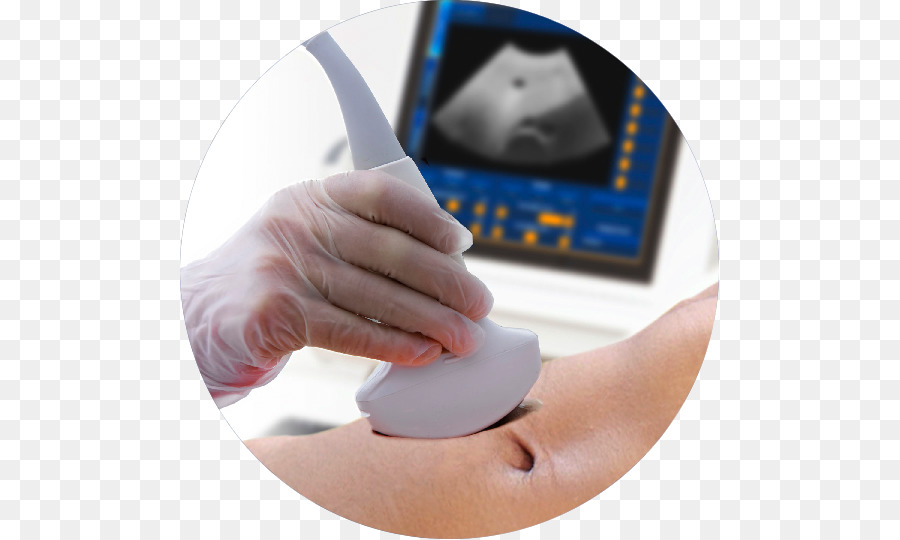 Back at the end of 1990s to her homeland, she took up literary, journalistic and teaching activities.
Back at the end of 1990s to her homeland, she took up literary, journalistic and teaching activities.
Tatyana Tolstaya was the permanent host (together with Avdotya Smirnova) of the television talk show “School of Scandal”, which aired from 2002 to 2014, first on the Kultura TV channel, and then on NTV. In 2003, the program was awarded the TEFI television award as the best talk show. In collaboration with Smirnova, Tolstaya wrote the book “The Kitchen of the School of Scandal”.0003
Tatyana Tolstaya is a laureate of the Russian independent award in the field of the highest achievements of literature and art “Triumph” for 2001.
In 2010, the writer won the prize in the “New Culture of New Europe” nomination, which was presented to her at the 20th International Economic Forum in Poland.
In 2014 Tatyana Tolstaya’s story “Light Worlds” was awarded the Belkin Literary Prize.
Winner of the 2019 Writer of the Year Award.
Since 1989 he has been a permanent member of the Russian PEN Center.